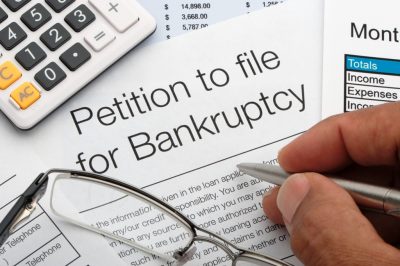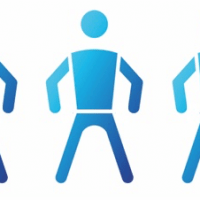- Lemberg Law
- Bankruptcy Law: Terms And Definitions
- FAQ About Bankruptcy
- How to File Bankruptcy Without a Lawyer
First, determine if your eligible to file for Chapter 7 or Chapter 13. Next, participate in required credit counseling. Then, submit your bankruptcy petition to the court and attend a meeting of your creditors.

There are five steps you need to take if you file bankruptcy without a lawyer.
1. Determine if you are eligible to file for Chapter 7 bankruptcy or Chapter 13 bankruptcy.
Chapter 7 bankruptcy consists of liquidating your assets to pay your creditors and then having the rest of your debt wiped away. This option is typically available only to those whose income from the previous six months equals or is lower than the median income in the state where you live.
You can calculate your Chapter 7 eligibility by completing forms 122A-1 (Statement of Your Current Monthly Income) and 122A-2 (Chapter 7 Means Test Calculation). You’ll need to consult the U.S. Trustee Program website to gather information applicable to the area where you live. Line 40 of Form 122A-2 discusses “presumption of abuse,” which is another way to talk about Chapter 7 eligibility. Depending on your numbers, you may be automatically eligible for Chapter 7, you might be able to argue that you have special circumstances that should allow you to file for Chapter 7, or you could perform additional calculations regarding your nonpriority unsecured debt to see if you might be eligible.
If you are not eligible to file for Chapter 7, then you may be able to file for Chapter 13. Chapter 13 reorganizes your debts, allows you to submit a payment plan, and directs you to make monthly payments for either three or five years. After that time, eligible debts are discharged. Chapter 13 is more complicated than Chapter 7, but you are within your rights to file pro se, which means without a lawyer. If you have debts secured by property valued at less than $1,184,200, and unsecured debts totaling less than $394,725, then you are eligible to file for Chapter 13 bankruptcy.
 2. Obtain credit counseling
2. Obtain credit counseling
Prior to filing your bankruptcy petition, you’re required to complete a court-approved credit counseling program. The U.S. Department of Justice and the U.S. Trustee Program websites have lists of approved credit counseling programs. Some programs are offered online, others in person, and still others over the phone. When you complete the program, you’ll receive a certificate that you’ll submit with your bankruptcy petition.
 3. Submit your bankruptcy petition
3. Submit your bankruptcy petition
Preparing your bankruptcy petition is the most arduous part of the process. The Bankruptcy Court expects you to be familiar with the U.S. Bankruptcy Code, the Federal Rules of Bankruptcy Procedure, and rules that apply to the court in your jurisdiction. All of this information is available online. The law, procedures, and rules will help you determine, for example, if any of your property is exempt from liquidation and which debts you should include in your petition.
Your bankruptcy petition consists of a whole packet of forms and schedules. Your completed petition may be 100 pages or more. All of the forms are available free of charge from the U.S. Courts website. Look for the forms that are numbered in the 100s; these are the forms that apply to individuals and couples.
When you file, you’ll be charged $335. There is a form you can file if you’d like to pay in installments, or the judge can waive your fees if your income is less than 150% of the federal poverty level.
 4. After you file for bankruptcy
4. After you file for bankruptcy
Between two and six weeks after you file your petition, your case trustee (appointed by the court) will schedule a meeting of creditors. Your creditors may or may not attend the meeting, but you must be present and answer questions under oath. You may also have to provide documentation to the trustee. The trustee will then report back to the court.
If you are filing under Chapter 13, you will need to immediately begin making monthly payments to the trustee according to your repayment plan. If you are filing under Chapter 7, the trustee will liquidate your assets and then pay your creditors to the greatest extent possible.
 5. Discharging your debts
5. Discharging your debts
If you are filing under Chapter 7, your debts will be dismissed about two to three months after the meeting of creditors. In the meantime, you may wish to petition the court to reaffirm a debt. For example, you may want to keep your car, in which case you’ll need to file paperwork and promise the lender that you will continue to make payments. In addition, you’re required to complete a financial management course.
If you are filing under Chapter 13, then you will continue your repayment plan for the length of time specified. At the end of that period, any balances on eligible debts will be discharged.
Our Recommendation?
It’s possible to file bankruptcy without a lawyer, but relying on the skill of an experienced bankruptcy attorney will help ensure that the process goes smoothly and is as painless as possible. Lemberg Law has a team devoted to representing clients who pursue bankruptcy as a way to resolve their debts. Call 844-685-9200 and receive a free consultation, or submit our online request form.
Have questions? Call us now at 855-301-2100 for a Free Case Evaluation.
Our services are absolutely FREE to you.
The harassing company pays our fees.




